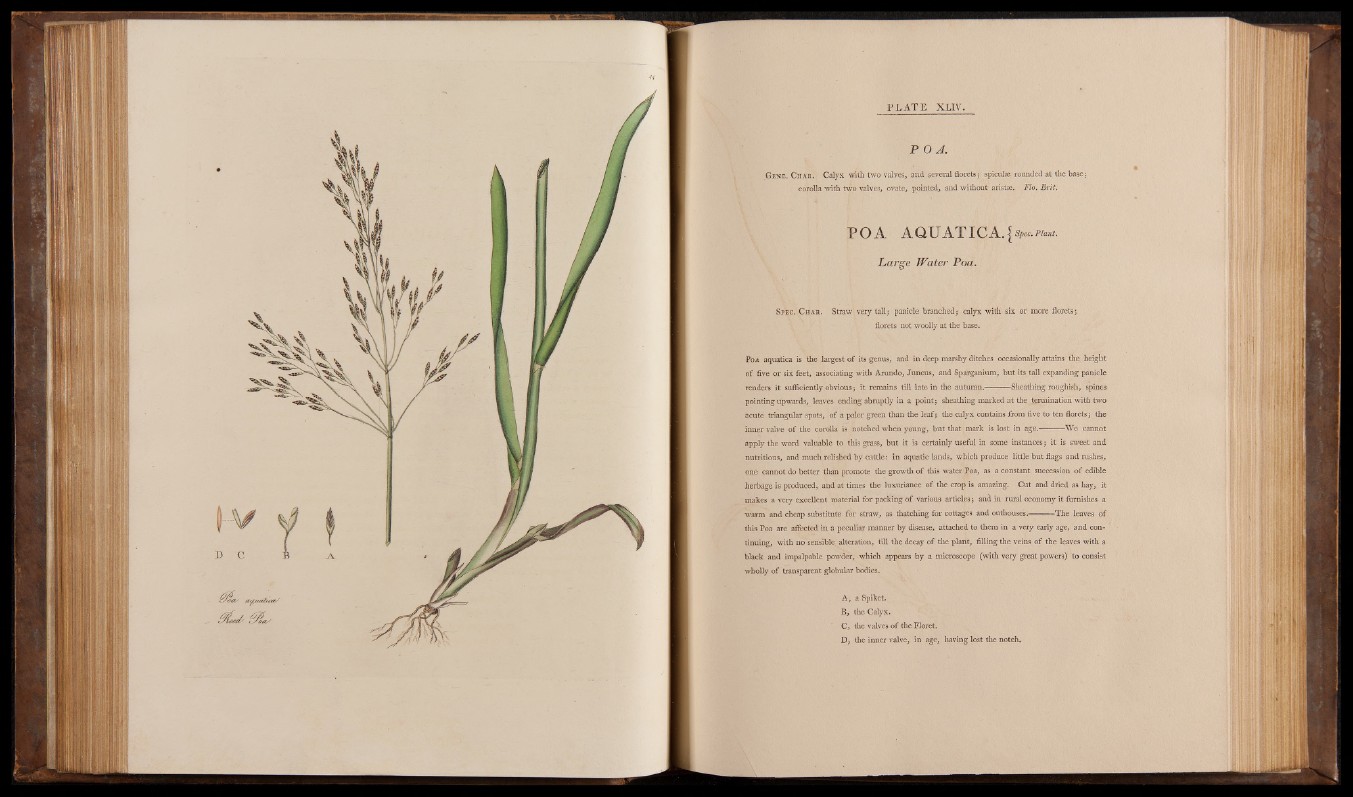
P O A.
Gene. Char. Calyx with two valves, and several florets; spiculae i*ounded at the base;
corolla with two valves, ovate, pointed, and without aristae. Flo. Brit.
POA A QU AT IC A. j spec. pimt.
Large Water Poa.
Spec. Char. Straw very tall; panicle branched; calyx with six or more florets;
florets not woolly at the base.
Poa aquatica is the largest of its genus, and in deep marshy ditches occasionally attains the height
of five or six feet, associating with Arundo, Juncus, and Sparganium, but its tall expanding panicle
renders it sufficiently obvious; it remains till late in the autumn.--------- Sheathing roughish, spines
pointing upwards, leaves ending abruptly in a point; sheathing marked at the termination with two
acute triangular spots, of a paler green than the leaf; the calyx contains from five to ten florets; the
inner valve of the corolla is notched when young, but that mark is lost in age.—-----We cannot
apply the word valuable to this grass, but it is certainly useful in some instances ; it is sweet and
nutritious, and much relished by cattle: in aquatic lands, which produce little but flags and rushes,
one cannot do better than promote the growth of this water Poa, as a constant succession o f edible
herbage is produced, and at times the luxuriance of the crop is amazing. Cut and dried as hay, it
makes a very excellent material for packing of various articles; and in rural economy it furnishes a
warm and cheap substitute for straw, as thatching for cottages and outhouses.---------The leaves of
this Poa are affected in a peculiar manner by disease, attached to them in a very early age, and continuing,
with no sensible alteration, till the decay of the plant, filling the veins of the leaves with a
black and impalpable powder, which appears by a microscope (with very great powers) to consist
wholly of transparent globular bodies.
A, a Spiket.
B, the Calyx.
C, the valves of the Floret.
D, the inner valve, in age, having lost the notch.